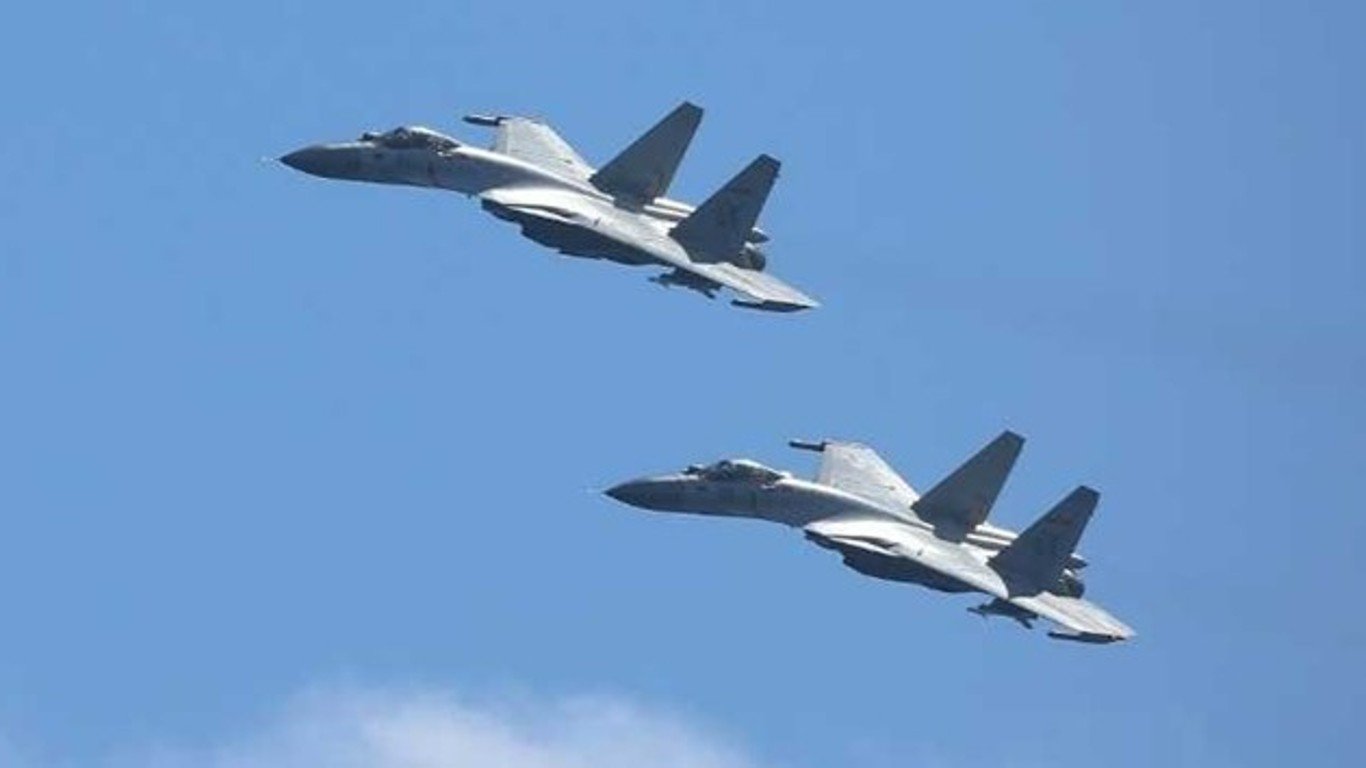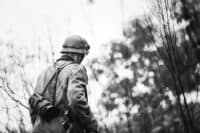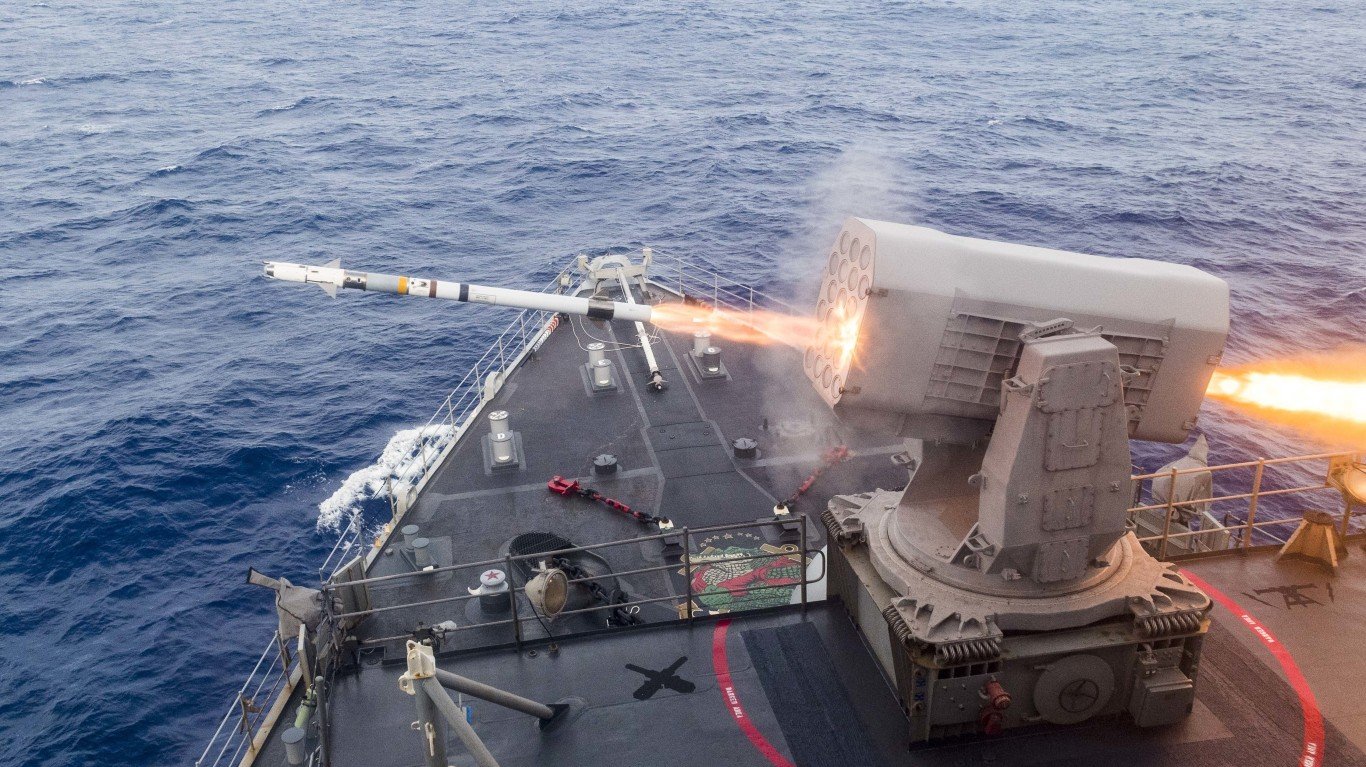

During the Cold War, the United States spent over $10.9 trillion on nuclear weapons. This includes the weapons themselves, the platforms and delivery vehicles (such as aircraft, rockets, and facilities to protect them), command and control systems, administrative costs and salaries, maintenance, waste, and more. All that money went to the production of over 70,000 nuclear warheads between 1945 and 1996. By itself, the United States could have annihilated the Earth many times over. While that risk has been lessened with nuclear treaties over the years, it remains a real possibility with significant stockpiles of nuclear weapons around the world. But where does the United States store its nuclear weapons?
The United States Nuclear Stockpile
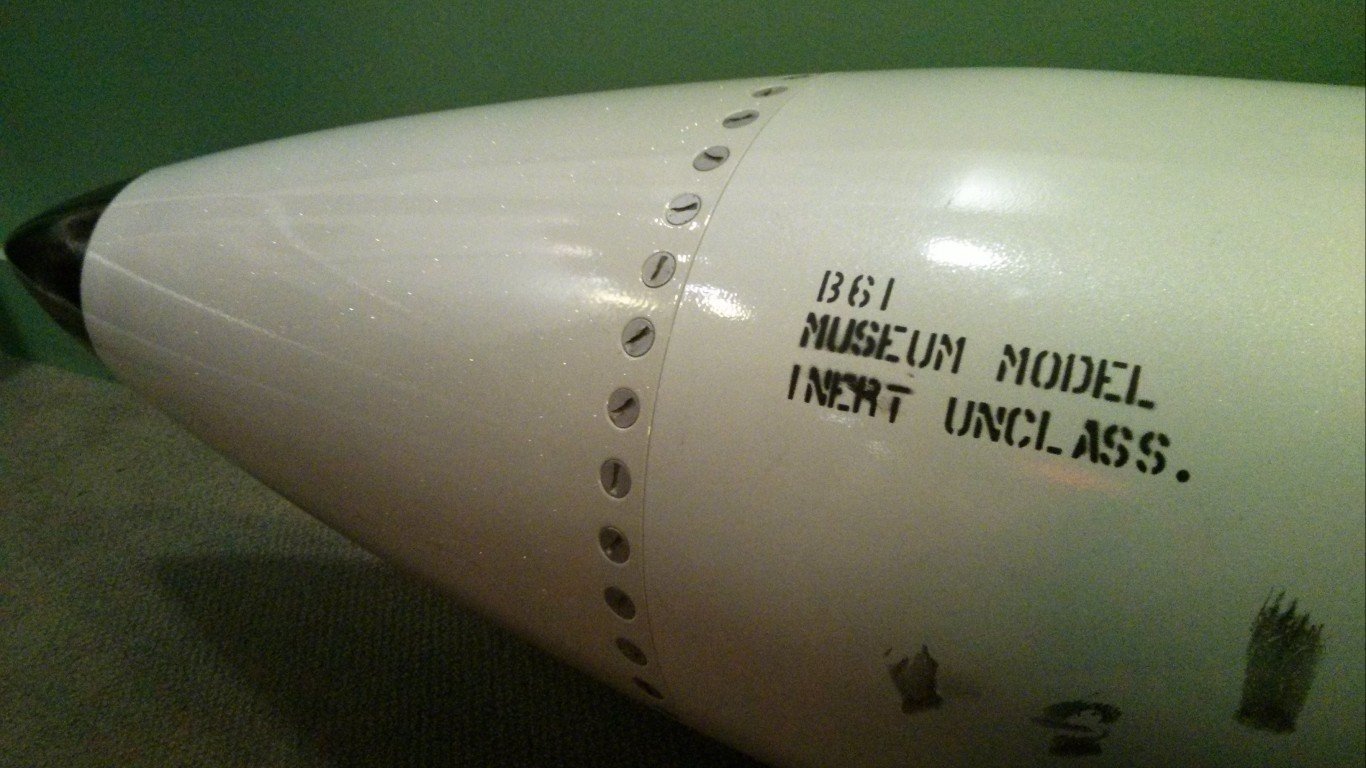
Currently, it is estimated that the United States has about 5,244 nuclear weapons. Of that number, 1,670 are active and deployed in various locations and ready to launch. The location, status, and even existence of nuclear weapons is highly classified information, and the U.S. government has only revealed information about specific weapons under extreme circumstances. Tens of thousands have been retired and are being prepared to be dismantled. Old weapons, or those removed from the active list are dismantled in the Pantex Plant near Amarillo, Texas.
The current active stockpile of nuclear warheads is split between ICBMs, SLBMs, and various other strategic bombers. The land-based ICBMs are spread between 450 operational missile launch facilities in three launch areas over five states. These launch facilities are staffed and maintained by the Air Force Global Strike Command.
These launch locations were picked because they are far away from the coasts, which would be the first places lost in any invasion and the farthest place from any submarine attack (maximizing the time they have to prepare and launch). They are also far from populated areas since nuclear weapons would probably be the top targets during a nuclear war. Finally, they were as close as they could reasonably be to the Soviet Union when firing over the North Pole.
The sea-based SLBMs are staffed and maintained by the Navy on ballistic missile submarines. Nuclear gravity bombs and air-launched nuclear missiles are maintained by the Air Force.
The total cost of maintaining the current nuclear stockpile is around $60 billion every year, as of 2021.
#1 Francis E. Warren AFB
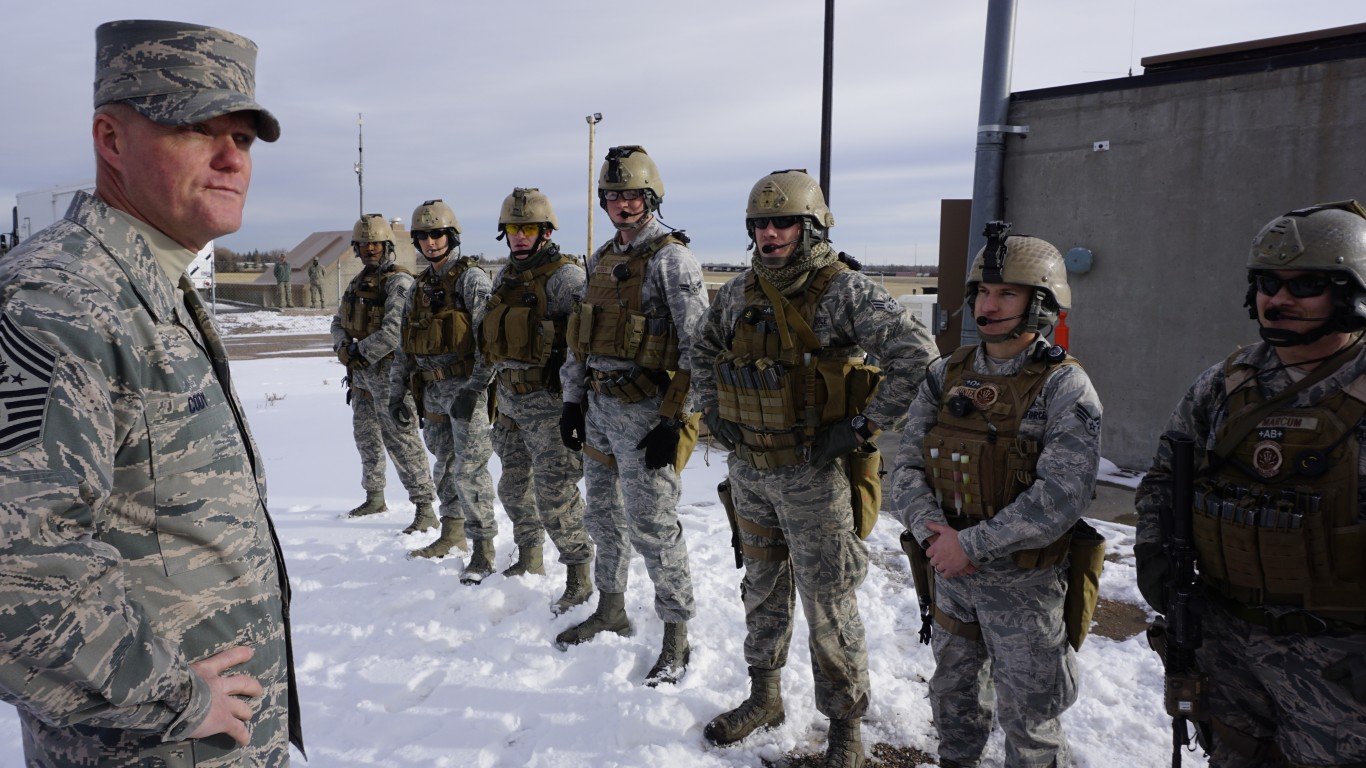
The Francis E. Warren Air Force Base is located in Wyoming near Cheyenne. It was founded in 1967 and is named after Francis. E. Warren, the first governor of the state of Wyoming. Warren AFB was the first ICBM base and is home to the Twentieth Air Force. It is the oldest continually active Air Force base.
There are 150 nuclear weapons on the Warren AFB, all of them fixed to LGM-30G Minuteman II ICBMs. All 150 warheads are on constant alert and ready to launch.
#2 Minot AFB
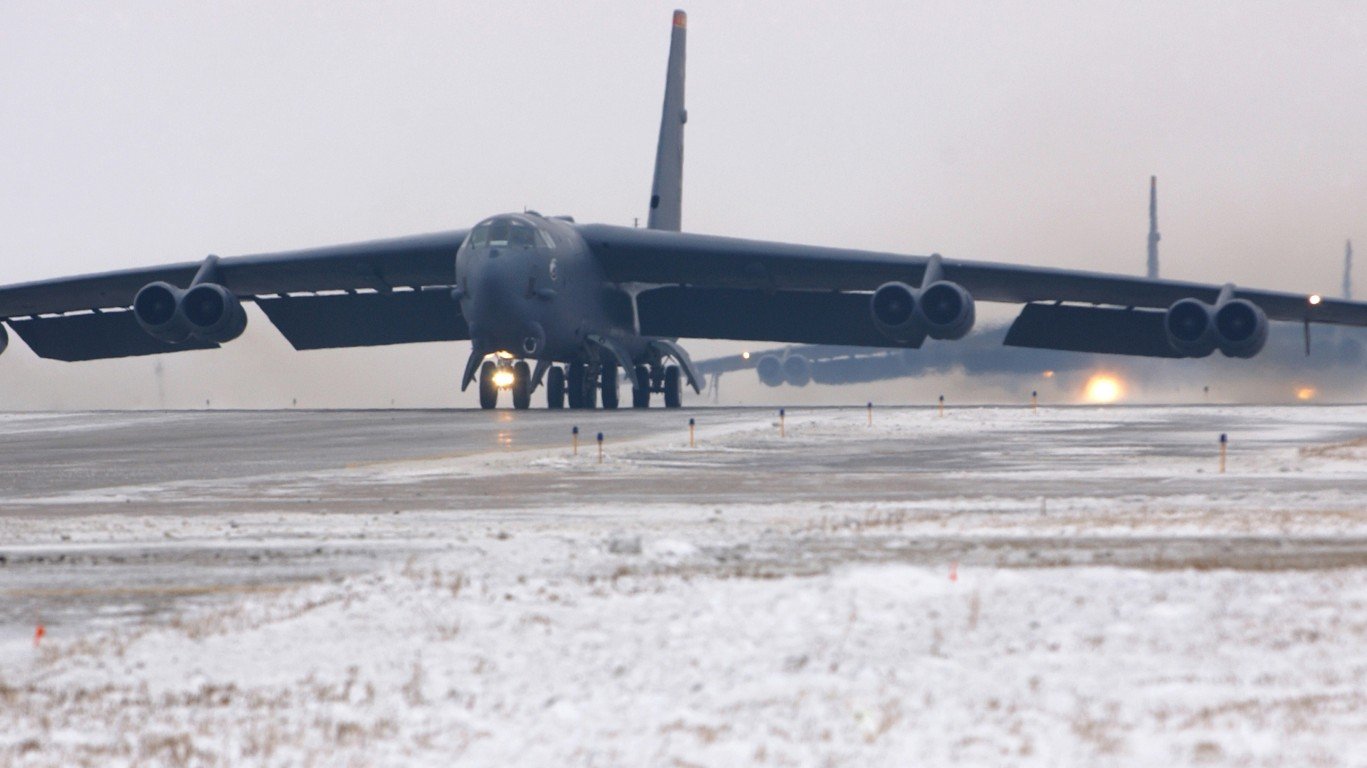
Minot Air Force Base is located in North Dakota near the city of Minot. It is home to the 91st Missile Wing, which is responsible for the stockpile of ICBMs, and the 5th Bomb Wing, which operates strategic bombers from the base. Minot AFB is only one of two U.S. bases that still has active B-52 bombers.
The Minuteman III missiles, which carry the nuclear warheads to their intended targets, are about 60 feet long, weigh 79,000 pounds, and can hit a target 8,700 miles away within 800 feet. They carry the W78 warheads which have a destructive yield of 335–350 kilotons.
#3 Malmstrom AFB

Malmstrom Air Force Base is located in Montana near the city of Great Falls. It is a base for the 341st Missile Wing of the Twentieth Air Force, the Fifteenth Air Force, the Air National Guard, and the U.S. Army Reserve.
Malmstrom AFB also made headlines when several of the officers in charge of the Minuteman III missiles on the base were found to be cheating and sharing answers to proficiency tests. Over 90 officers were suspended and nine senior officers were removed from their command.
#4 Pacific-Based Submarines
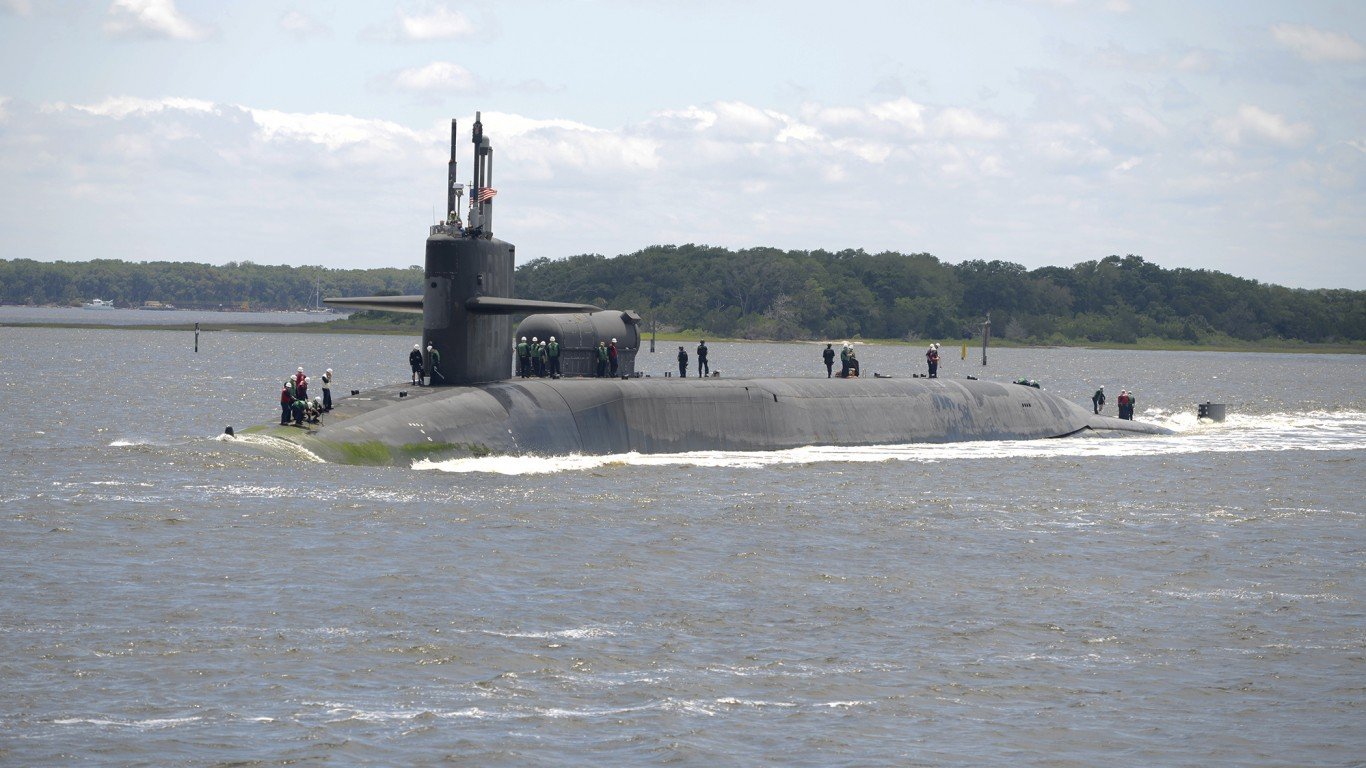
The United States Navy operates nine nuclear-capable submarines in the Pacific Ocean. All of them are Ohio-class Trident submarines, which are the largest submarines ever built for the U.S. Navy and the third-largest ever built in the world. The Ohio class is capable of carrying 24 Trident II SLBMs. Combined with the Atlantic Fleet, the Navy carries around half of the entire nuclear stockpile of the United States.
The entire purpose of nuclear submarines is to remain silent and undetected in order to be able to launch their payloads as part of a first-strike or second-strike attack. During their tests in the 1980s, the Ohio-class submarines were virtually undetectable.
#5 Atlantic-Based Submarines
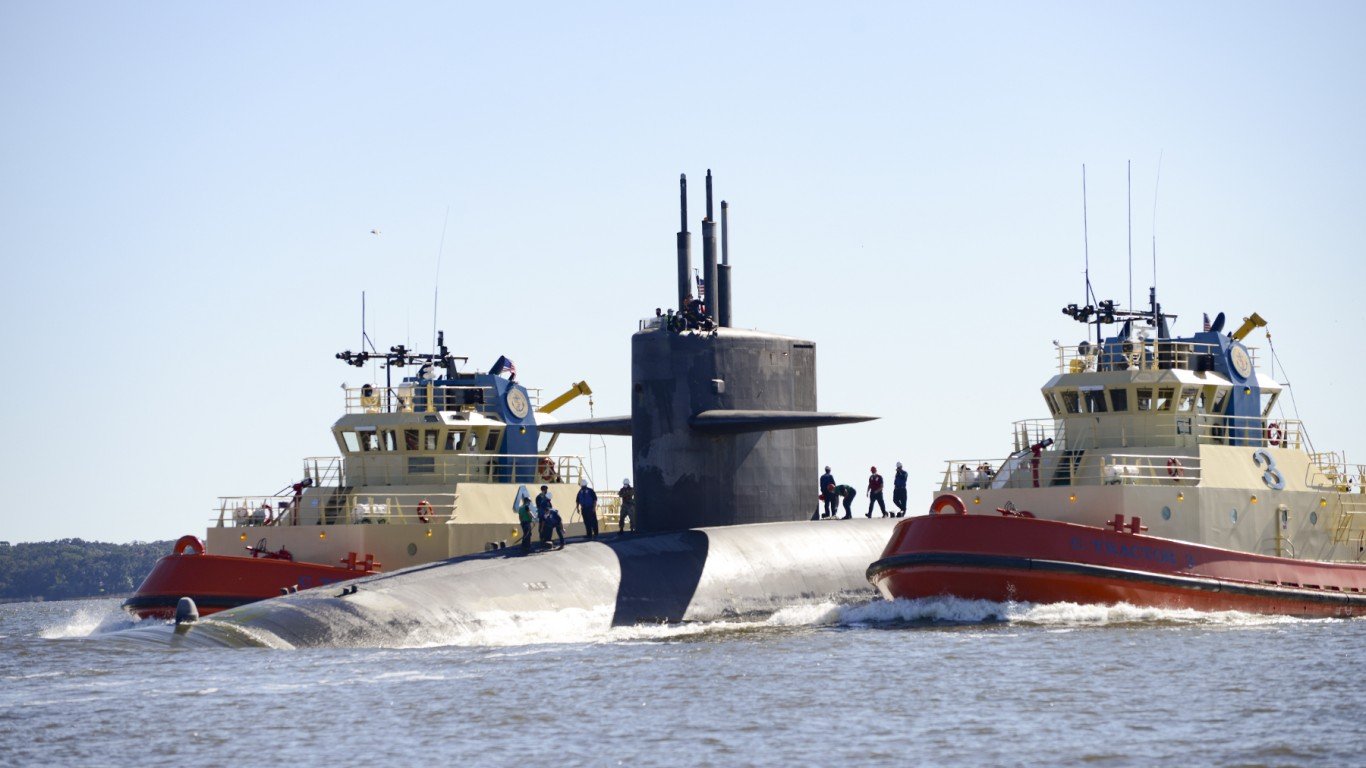
The Navy operates five ballistic missile submarines in the Atlantic. All of them are Ohio-class submarines. In total, the Navy has 14 submarines with active nuclear weapons.
Submarines armed with nuclear weapons do not have active targets when they are in service, unlike their land- and air-based counterparts. This is because they act as a nuclear deterrent and second-strike vehicles. The submarines are designed to survive the destruction of an initial nuclear exchange before surfacing and launching their payloads at the enemy, ensuring their complete annihilation.
#6 Heavy Bombers
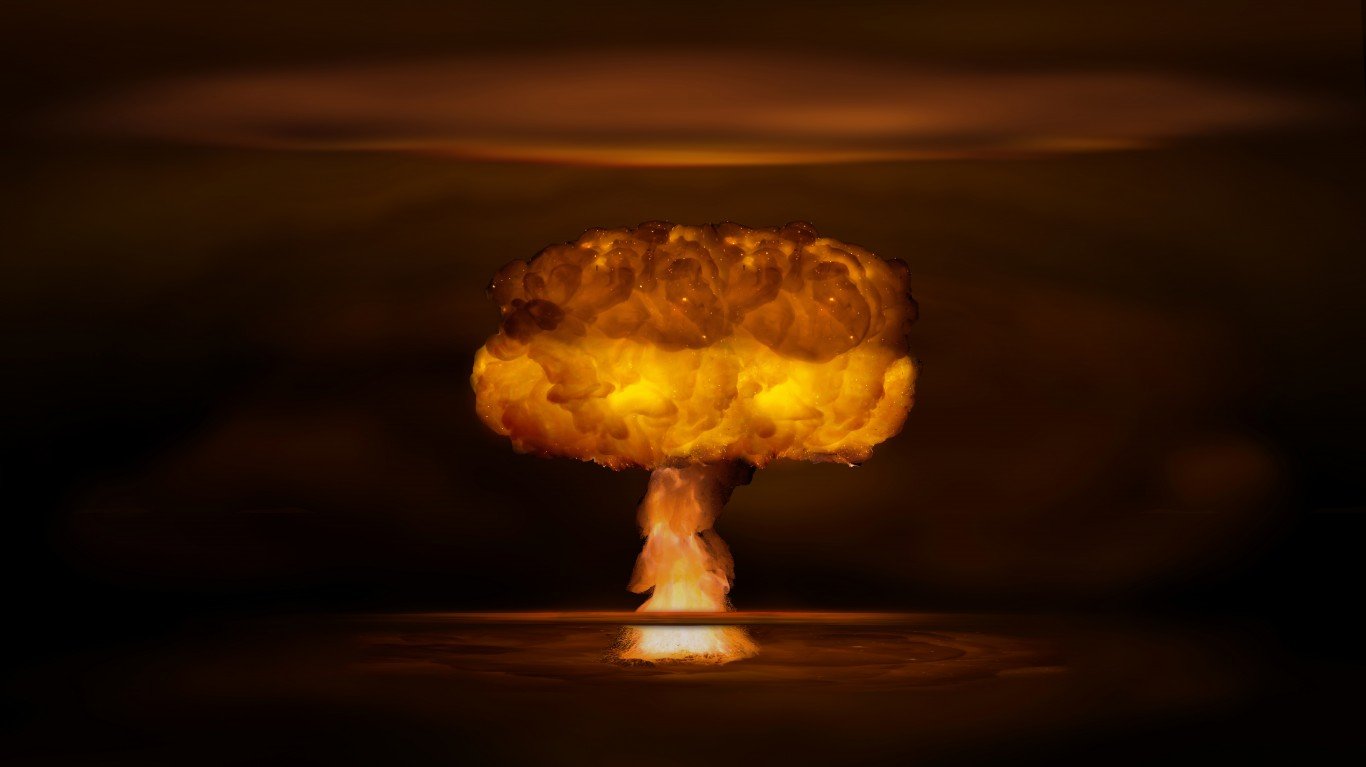
The advancement of technology has made nuclear weapons dropped or launched from airplanes nearly obsolete, yet the United States (among other nuclear powers) maintains a large number of nuclear-equipped aircraft as part of the triad doctrine of nuclear warfare. The triad is the coordination between the Navy, Air Force, and Army to be able to deploy nuclear weapons in the event that all other installations and weapons have been destroyed or incapacitated.
The United States, Russia, and China are the only nations that continue to use heavy bombers, as their function has largely been superseded by newer and better aircraft.
The United States maintains a fleet of 60 heavy bombers, stations around the world, capable of carrying and deploying nuclear weapons. Heavy bombers generally have the longest range and largest payload of any aircraft, meaning they can stay in the air as long as needed to survive an initial attack and deploy their weapons.
#7 B-2 Stealth Bombers
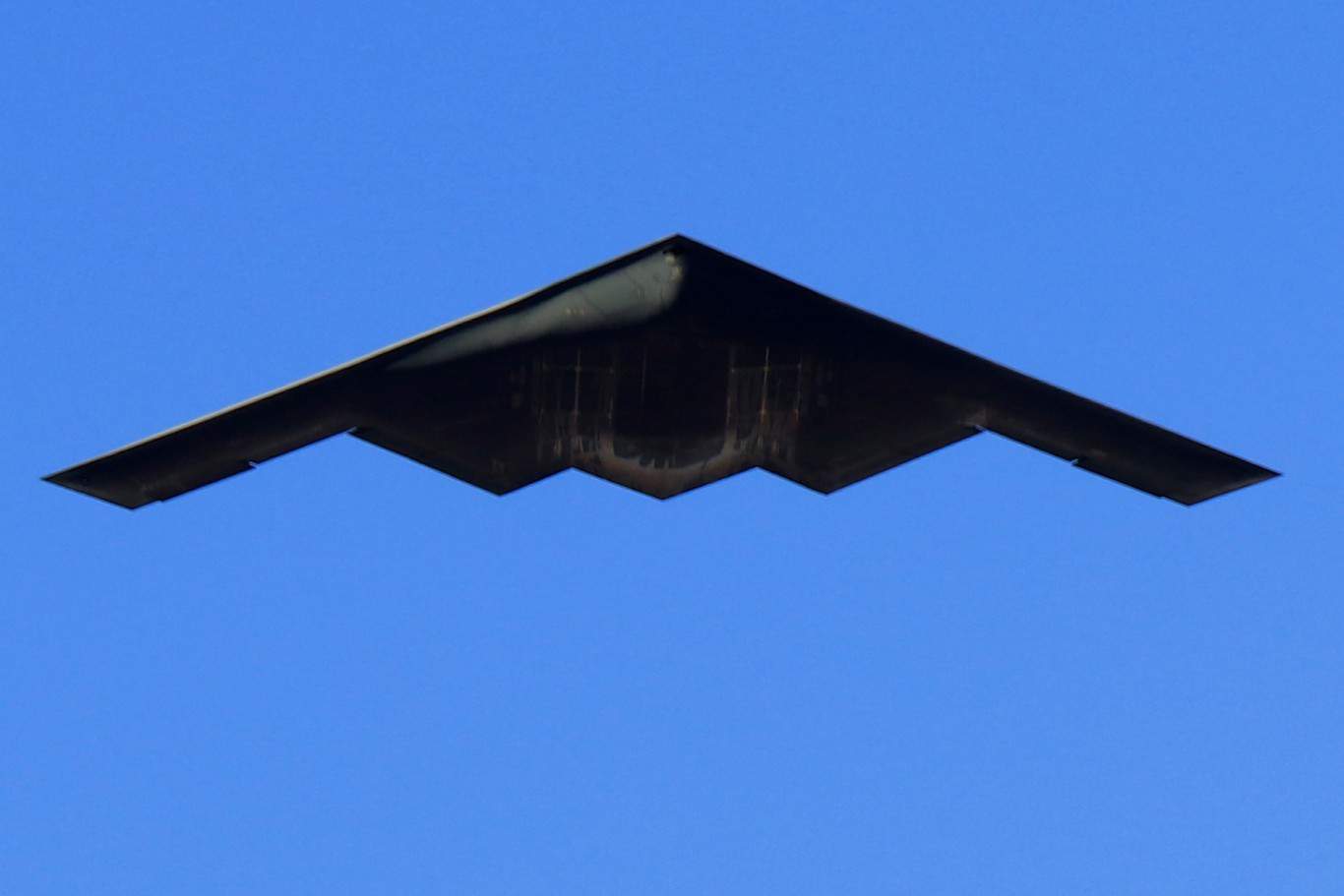
The Northrop Grumman B-2 Spirit is a stealth bomber with the most advanced stealth technology available, allowing it to fly past many anti-air defenses. The B-2 is the only aircraft in use that can carry large weapons in an effective stealth configuration. There are only 20 B-2s in service, and all of them are fitted with nuclear weapons (or have nuclear weapons on-site ready to be fitted). They will continue to operate until 2032 when they will be replaced by the B-21 Raider.
The B-2 can fly at an effective altitude of 50,000 feet and can fly without refueling for more than 6,900 miles.
#8 Boeing B-52 Stratofortress
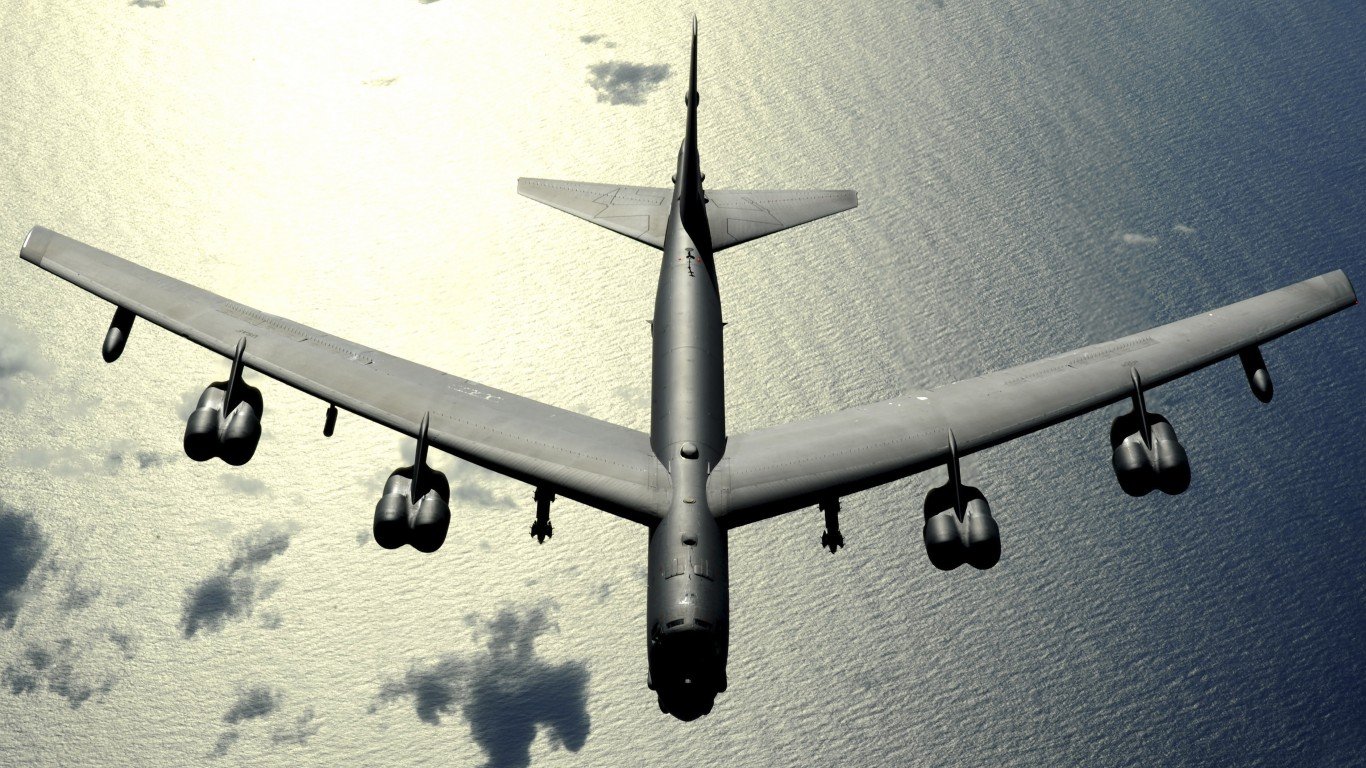
The B-52 is a long-range, subsonic, strategic bomber developed by Boeing (NYSE:BE). It was originally developed during the 1940s and took its maiden flight in 1952, and will continue to serve until the 2050s.
The United States Strategic Command stopped assigning traditional gravity bombs to B-52 planes because the planes were no longer able to penetrate anti-air defenses. Instead, air-launched cruise missiles armed with nuclear warheads will become the normal weapons for nuclear missions.
The United States maintains 72 B-52 bombers and 40 of them are ready and able to carry nuclear missiles.
#9 Classified Nuclear Storage
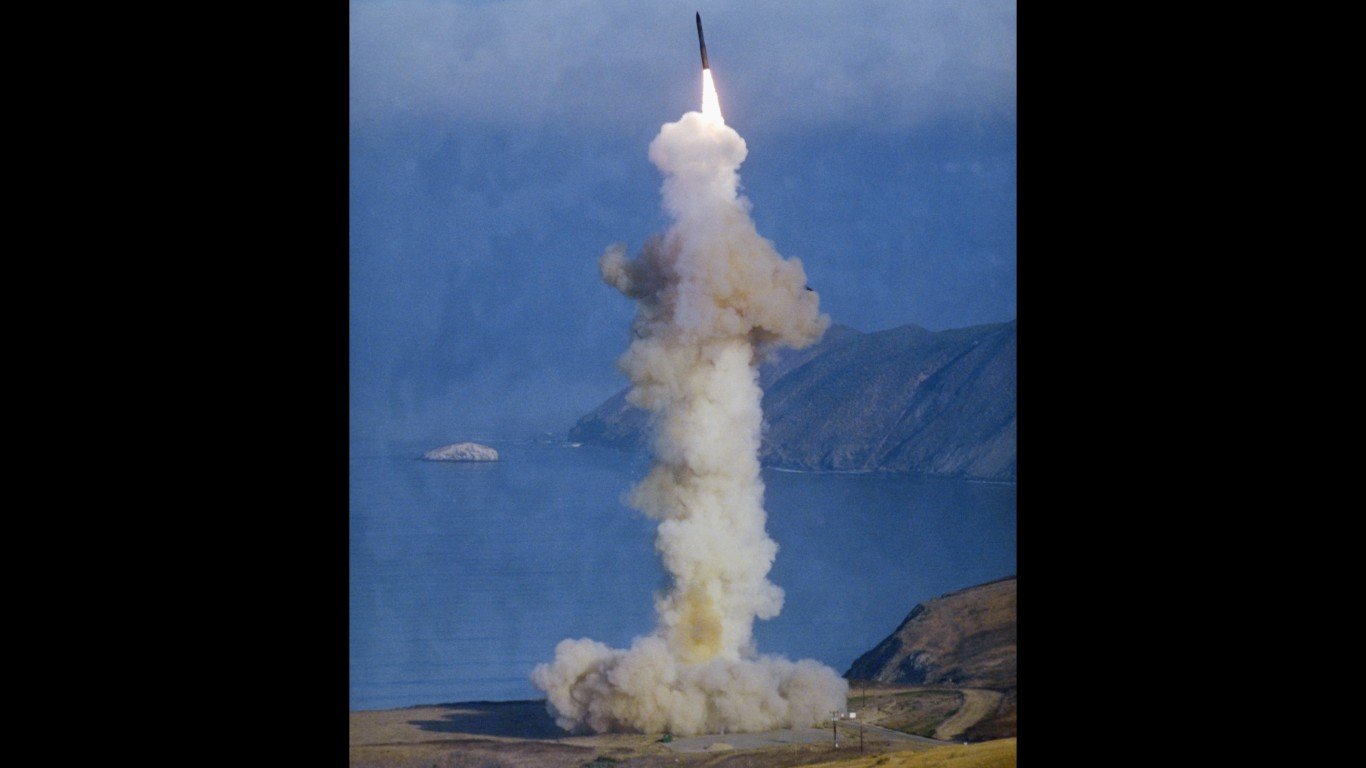
The United States has an estimated 1,938 nuclear warheads in storage and in reserve. It has an additional 1,536 nuclear weapons that have been retired but not yet dismantled and rendered unusable. The location and even existence of these weapons are classified, and the United States government does not publicly reveal any information about them. The location of where the United States stores its reserve weapons or the weapons waiting to be destroyed is not public knowledge.
Take This Retirement Quiz To Get Matched With A Financial Advisor (Sponsored)
Take the quiz below to get matched with a financial advisor today.
Each advisor has been vetted by SmartAsset and is held to a fiduciary standard to act in your best interests.
Here’s how it works:
1. Answer SmartAsset advisor match quiz
2. Review your pre-screened matches at your leisure. Check out the advisors’ profiles.
3. Speak with advisors at no cost to you. Have an introductory call on the phone or introduction in person and choose whom to work with in the future
Take the retirement quiz right here.
Thank you for reading! Have some feedback for us?
Contact the 24/7 Wall St. editorial team.
